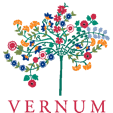
Fascinating cultural products
The success of cultural products naturally lies in their value, but also hinges on their capability of resisting fashion and thus embodying a sense of timelessness. But even more so, a true cultural product has a heart - content that invites participation or, better yet, inspires dialogue. In other words, a true cultural product is a living product.
For a designer, the Stone and Bronze Ages, as well as nearly the near-millennium of the Middle Ages, are an inexhaustible cornucopia. Prehistoric rock and cave paintings and medieval masterpieces alike have inspired artists to create a communicative, unequalled collection with high cultural status. In this spirit, the Matrona Textile Collection has revived the pictorial motifs from the prehistoric era and selected themes from the Middle Ages without losing the fundamental expression of the original artists.
The unique Matrona textiles - woollen blankets, shawls and cushion covers featuring handcrafted patterns - are produced in small series by textile artist Helbe Pajari in her Vernum design studio. This ensures the originality, high quality and ethical background of all products.
The Matrona Collection consists of - but is not limited to - motifs representing the three following themes: the Prehistoric Age, the Middle Ages, and folk art and tradition.






Folk art ornaments are a form of applied art. They are present in many spheres of the material folk culture: houses, furnishing, dishes, personal adornment and domestic tools. Wooden ornaments have been carved and painted by hunters and peasants throughout history. Geometrical ornaments and symbols dating back to early history - and to the Middle Ages - derive their distinctive features from regional traditions. The spiral is one of the most elementary motifs and gained cult significance in some earlier cultures. The eight-point star - and its many variations - is also among the most popular decorative patterns in the world. And even today, the motifs of the lucky heart, zigzag, magic knot, dot, circle, rosette-whorl and diamond are very much present in our lives in one form or another.
Folk art and tradition
The motifs used for the theme of the Middle Ages derive from different sources. Great figural tapestries from the eleventh century, such as the Bayeux Tapestry from France, the Spanish Cloth of St. Gereon (11th century) and the Baldishol Tapestry of Norway (11th to 13th century) have been great sources of inspiration, as has been the sixteenth-century Swedish historian Olaus Magnus. His book depicting people’s lives in medieval Scandinavia was published in Rome in 1555.
The Middle Ages
The motifs chosen for this theme originate from the oldest human pictorial eras, i.e. from the Prehistoric, Stone, Bronze and Iron Ages. The sources of inspiration encompass rock art discovered on every continent - prehistoric cave paintings in France and Spain, rock paintings located in America, Africa, Australia, stone-age Finnish rock paintings, and rock engravings from the Swedish Bronze Age. During the Nordic Iron Age motifs were cut into and painted on stones and carved in wood. The Vikings lived from about 800 to 1050 AD in Denmark, Sweden and Norway. They were mostly farmers but some of them were also merchants, bandits and emigrants. These fascinating people developed a great culture and told their stories in stone with pictures and runes.
The Prehistoric Age



MATRONA








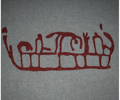

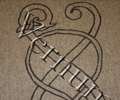
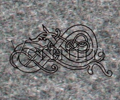

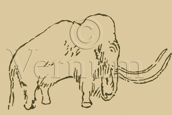
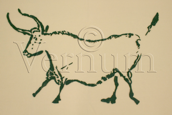
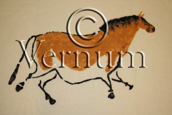
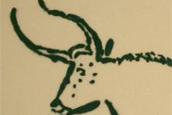
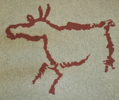
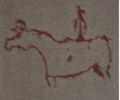

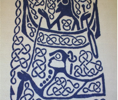
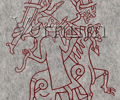

20240 Turku - Finland / helbe.pajari@vernum.fi / +358 45 113 2827
Linteum - Orarium - Deisis - Matrona
Designer Helbe Pajari - Vernum in Media
___


